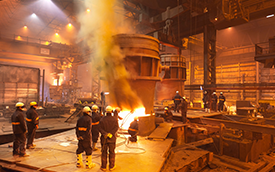
The fluctuations in crude oil market prices have become a focal point for various sectors, particularly retailers. As the cost of crude oil rises or falls, it directly impacts transportation costs and ultimately affects consumer prices. This dynamic creates a ripple effect that can alter purchasing behaviors and profit margins across the retail landscape.
Examining Crude Oil Market Prices

Crude oil market prices are subject to numerous factors including geopolitical tensions, supply chain disruptions, and changes in demand patterns. These variables contribute to volatility that can be challenging for retailers to navigate. When crude oil prices surge, operational costs increase significantly; this often leads retailers to pass on these expenses to consumers through higher product pricing. Conversely, when prices decline, there may be opportunities for retailers to offer competitive pricing strategies that attract more customers.
Find more about Mysteel.
Mysteel’s Role in Commodity Pricing
Mysteel has established itself as a key player in providing insights into commodity markets including steel and energy resources like crude oil. By offering real-time data and analysis on price trends, Mysteel enables stakeholders—including retailers—to make informed decisions regarding inventory management and pricing strategies. The information provided by Mysteel is invaluable during periods of significant price fluctuation as it helps businesses anticipate market movements effectively.
Crude Oil Price Trends in China’s Commodity Market
The crude oil price within China’s commodity market reflects both domestic consumption patterns and international influences. As one of the largest importers of crude oil globally, fluctuations in global prices have pronounced effects on local markets. Retailers operating within China must remain vigilant about these shifts as they can impact everything from logistics costs to final retail pricing structures.
The Current Market Price for Copper
In addition to monitoring crude oil prices, discernment the current market price for copper is essential due to its interconnectedness with energy costs. Copper serves as a critical component across various industries including construction and electronics; thus its pricing also reacts sensitively to changes in energy costs driven by fluctuating crude oil values. Retailers need comprehensive knowledge about both commodities since their interrelated nature could influence overall profitability.
Conclusion: Navigating Crude Oil Market Prices
Navigating the complexities associated with crude oil market prices remains an ongoing challenge for retailers today. With constant fluctuations influenced by multiple external factors such as geopolitics or economic conditions worldwide—retailers must adapt swiftly while maintaining customer satisfaction levels amidst changing cost structures.




